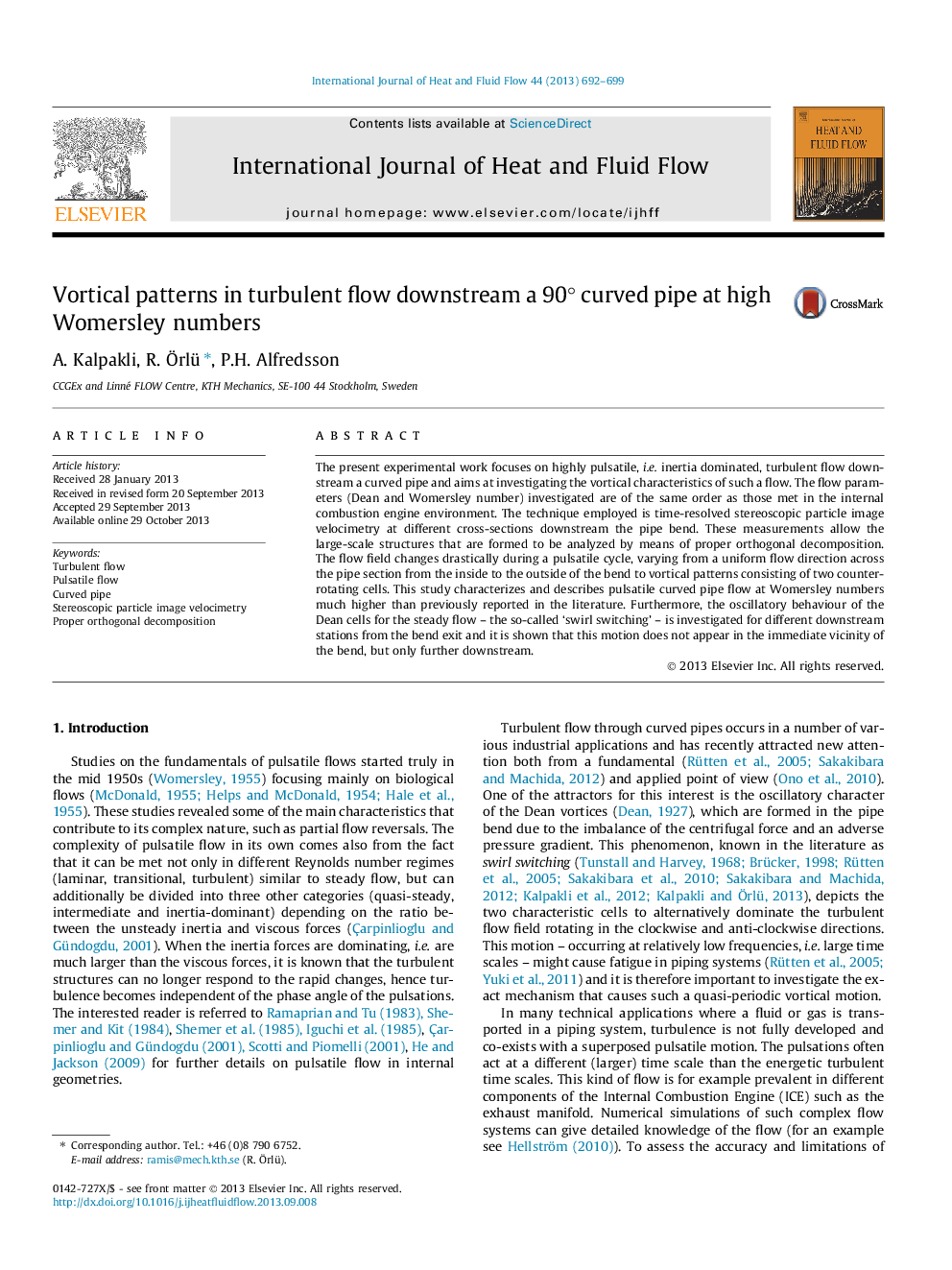| Article ID | Journal | Published Year | Pages | File Type |
|---|---|---|---|---|
| 655399 | International Journal of Heat and Fluid Flow | 2013 | 8 Pages |
•Turbulent curved pipe flow at high Womersley numbers is investigated by means of SPIV.•Swirl-switching for the steady flow case is examined for different bend stations.•Dean vortices appear to be steady in time at the immediate vicinity of the bend exit.•Flow field changes during a cycle from a net flow to different vortical patterns.•POD is found to extract modes that are observed during various phases.
The present experimental work focuses on highly pulsatile, i.e. inertia dominated, turbulent flow downstream a curved pipe and aims at investigating the vortical characteristics of such a flow. The flow parameters (Dean and Womersley number) investigated are of the same order as those met in the internal combustion engine environment. The technique employed is time-resolved stereoscopic particle image velocimetry at different cross-sections downstream the pipe bend. These measurements allow the large-scale structures that are formed to be analyzed by means of proper orthogonal decomposition. The flow field changes drastically during a pulsatile cycle, varying from a uniform flow direction across the pipe section from the inside to the outside of the bend to vortical patterns consisting of two counter-rotating cells. This study characterizes and describes pulsatile curved pipe flow at Womersley numbers much higher than previously reported in the literature. Furthermore, the oscillatory behaviour of the Dean cells for the steady flow – the so-called ‘swirl switching’ – is investigated for different downstream stations from the bend exit and it is shown that this motion does not appear in the immediate vicinity of the bend, but only further downstream.
